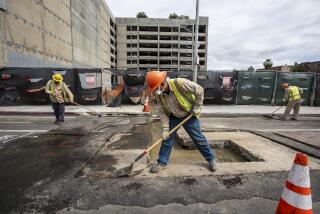Expand Outreach and Shelter to Include Males
Every year, UCLA students hang shirts at its Clothesline Project for victims of domestic violence. In 2000, I hung a shirt for my friend who had been repeatedly assaulted by his wife. She would get drunk and then kick him, throw objects at him and even attack him while he slept. Once, she broke his teeth by hurling an ashtray. Their two kids witnessed everything.
I won’t forget seeing my shirt hang there--the only shirt representing a male victim among hundreds of female victims. It reminded me of the isolation my friend felt as a man experiencing domestic abuse.
He wouldn’t hit back because he was raised a gentleman. He wouldn’t call the police because he was ashamed. He also feared that his wife would falsely accuse him of abusing her, turning the tables on the truth. The stigma and fear he faced left him feeling he had little choice but to just take it. And that he did.
Eventually it was me who couldn’t take it. I called the hotlines for help. The only shelter that would accept a male was the Valley Oasis in Lancaster. It was too far for my friend, who was afraid to leave his children in his wife’s care. The hotline said the only option was a motel or a homeless shelter, neither of which offered the counseling or other services he needed.
So he wound up receiving no help, and the violence continued.
Valley Oasis director Carol Ensign told me she had seen men come from as far as the East Coast because of the lack of services for males but that most male victims are like my friend and don’t seek help.
Studies bear out her conclusion. About 15% of the domestic violence complaints are filed by men, but Justice Department statistics from 1998 indicate that men are the victims of domestic violence 39% of the time.
Whether men are the victims 15% or 50% of the time shouldn’t matter. No victim should be ignored. But gender politics have contributed to years of downplaying male victims and helped leave men like my friend out in the cold.
For example, many people insist that when a woman strikes a man, it is done in self-defense. This is untrue. When surveys asked about self-defense, about 85% of women who were violent said they struck their male partner out of jealousy, on impulse or under the influence of drugs and alcohol, not self-defense.
Others minimize the risk to men by saying women don’t cause as much physical harm when they strike men. Violence--any violence--is bad. The severity is irrelevant.
Even minor violence is harmful to children who see it. And when they grow up to batter their own partners as a result, it won’t matter whether they saw Daddy hitting Mommy or vice versa.
Ignoring male victims does not help women; it only promotes the cycle of violence we say we want to end.
Thankfully, L.A. County has one of the few shelters that helps male victims. But one shelter out in the desert will hardly put a dent in the cycle. We need a shelter close to the city.
I can only hope that as more men seek help, maybe my shirt won’t feel so ostracized. Until then, it’ll just have to hang alone.
*
Marc Angelucci is a public interest attorney and the Los Angeles chapter chair of Stop Abuse for Everyone.
More to Read
Sign up for Essential California
The most important California stories and recommendations in your inbox every morning.
You may occasionally receive promotional content from the Los Angeles Times.










